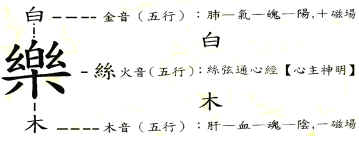|
The Basics of Shen Wu’s Musical Qi Gong |
||||||||||
|
Chinese Qi Gong is one of the treasures of Chinese culture. While it is usually thought of as useful for prolonging life and healthy lifestyles, Qi Gong also incorporates other classical arts from the Chinese tradition. In the Chin Dynasty Chinese people used Qi Gong as a means for maintaining and improving health. In recent years, Qi Gong is regaining its popularity. Qi Gong exercises have been shown to heal disease, maintain health, prolong life, and increase wisdom and well being. Millions of Qi Gong practitioners are using scientific methods to research Qi Gong. Ancient Chinese Qi Gong is dancing on the stage of modern science.
THE LOST MUSIC THERAPY APPEARS AGAINShen Wu developed his original Musical Qi Gong after studying the "Yellow Emperor's Manual of Internal Medicine". The music is based on the theory of classic tones and of Yang and Yin in Chinese traditional medicine. The effects of Shen Wu’s Musical Qi Gong have been confirmed by many experimental procedures.
A Chinese character is composed of the form and the meaning. However, people seldom notice the composition of the character for "medicine” . The symbol for “grass” is on the top and the symbol for music, on the bottom. The character that indicates "music" is composed of the words of "white", "wood", and "silk" respectively. In ancient times, these were all musical instruments. According to the five elements, the white color corresponds to the metal, gold. In the Yellow Emperor's Manual, it is the symbol for the lung, which takes air into the body (inspiration), and where the spirit is said to lie. Wood is the symbol for the liver, which corresponds to the circulation of blood. The ancient Chinese describe the soul as hidden there. Tradition accepts that the combination of the soul and the spirit result in strong blood circulation and well being, allowing for the emergence of enlightenment. On the top of the character for "music", there are two characters for "silk" on either side. Music played with the musical instrument, silk (or strings), can touch the heart and soothe the heart meridian. Also, the music strengthens the heart and keeps the spirit and the soul circulating throughout the body. One, having recovered from illness would express joy. Therefore, the character "music" came to represent joy. Judging from the above explanations, music and musical instruments offered medicinal care to the human body. In ancient times, people used music as a kind of therapy. According to "The Yellow Emperor's Manual of Internal Medicine" written five thousand years ago, a doctor named Mio Fu, sat on the floor, playing a bamboo pipe as medical treatment. As time passed, people discovered that herbs could be useful in treating physical ailments. People then added "grass" to the top of the character for "music", completing the word for “medicine”. Gong, Shang, Jieu, Zhe, and Yu are five notes, corresponding, respectively, to the five tastes--sweet, sour, bitter, salty and spicy. The idea of medical treatment using the five notes came before that of the five flavors, but both were popular among the people of the time. However, with the increase in efficacy of herbal medicine, the use of music as medicine vanished completely.
Apparently, politics was alive and well in ancient
China. The disappearance of music as medicine has an interesting
history. In the beginning of Spring and Autumn (about 722 -484 B.C.),
patients went to doctor "Tsu Yo" for medical treatment. Tsu Yo would
wave a tender bamboo stick in an orderly rhythm, making simultaneous
sounds like a song or melody. Gradually, the emperor chose this music
for its calming qualities. The ruling class, however, feared that
people would be so intoxicated with music that the military forces would
be weakened and the country would become defenseless. Therefore, they
tried to monopolize the music, dictating that music could only be played
in the palace. Subsequently, saint Confucius decided to rate music,
allowing each level to be listened to in accordance with one’s social
class. During the Chin Dynasty, the ruler burned all the books and
killed the scholars. All the musical scores were burned and music as a
medical treatment disappeared. Though recollected by the people in the
Tang Dynasty, to serve as medical treatment, music was only permitted
for the royal families. The rulers of the Shung Dynasty regarded music
as an extravagant way of life, thus rendering it unpopular. Only under two conditions would music therapy emerge again: (1) the appearance of a student who is familiar with the five tones and rhythm, as well as a knowledge of musical instruments and proficiency in the five elements; and (2) one who is a great Qi Gong practitioner. There was only one such person in a period of five hundred years. Shen Wu was born in the central part of Mainland China. He played musical instruments and practiced Qi Gong from an early age. He was inspired to apply his learning to re-develop musical therapy into an alternative medical treatment that has brought great benefit to thousands of patients. According to "The Yellow Emperor's Manual of Internal Medicine", the five musical tones correspond to the five internal organs--Gong - spleen, Shang - lung, Jiao - liver, Yu - kidney, and Zhi - heart. Sound waves, known as mechanical waves, serve as an electrical medium, stimulating the organs in the body through acupuncture points. Music, therefore, enhances circulation of the blood, balances the energy systems and restores the health of the body. |
||||||||||
|


